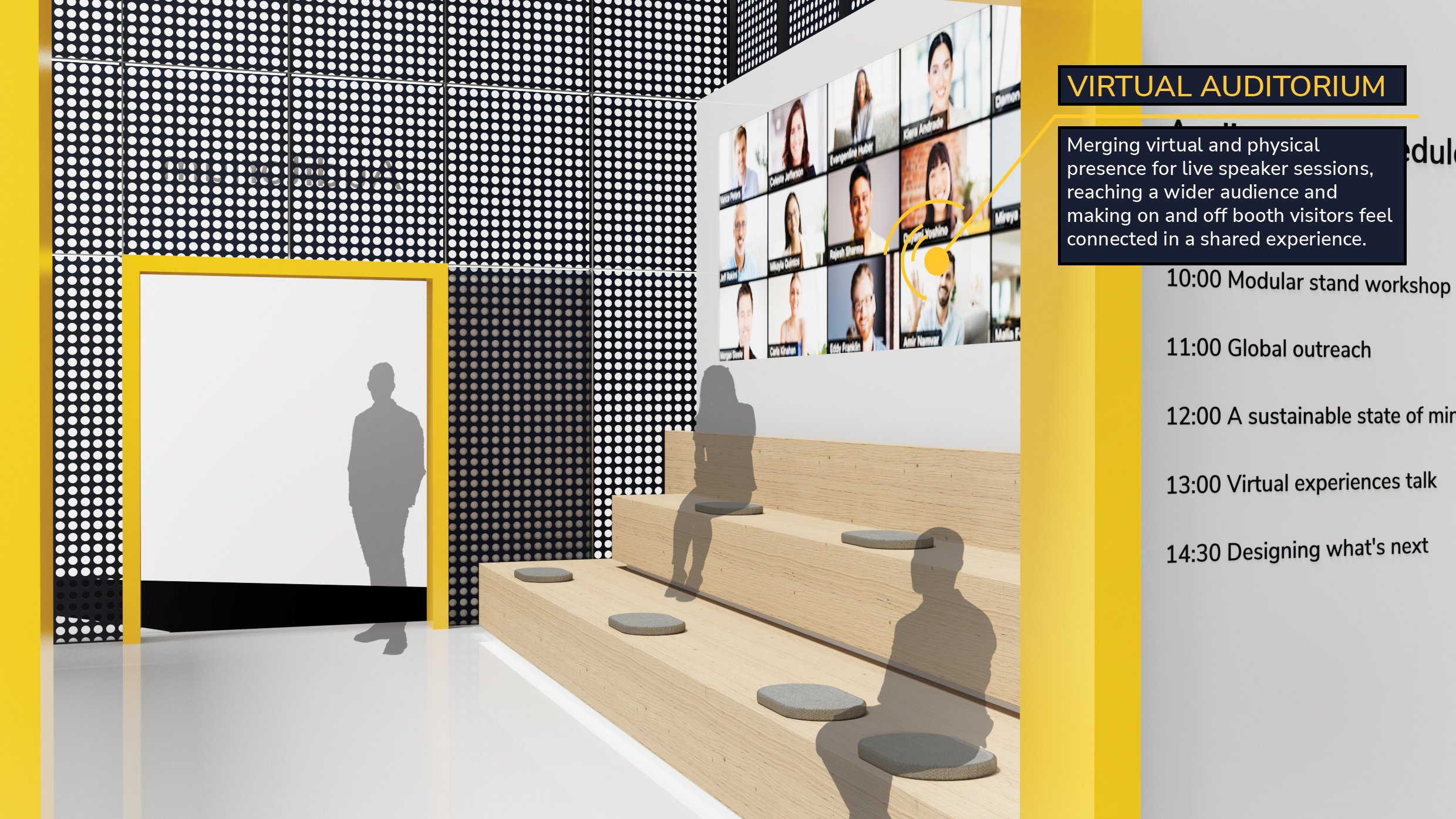Sam Rowe: Futureproofing exhibitions | Part ONE
Futureproofing Exhibition & Event Design
First published by Exhibition News
Post-Covid and Brexit, in a business environment combining a growing appetite for sustainability with rising energy costs, supply chain uncertainty and the mind-bending possibilities of the metaverse, how can we best futureproof exhibitions and events?
As CEO of a company that successfully pivoted during Covid-19 to create a new virtual offer and which remains the only exhibition and events company to hold The Queen’s Award for Enterprise in Sustainable Development, Ignition’s Sam Rowe is in a good position to ponder the possibilities.
Part 1 - Technology
Is the future hybrid - or will the metaverse change everything once again?
Sam Rowe, CEO, Ignition DG
What effect will technology have on the future of exhibitions and events and can it answer some of the sustainability and cost issues on our horizons? ‘A very big effect’ is the answer to the first part, whilst ‘yes’ and ‘no’ is the answer to the second.
Certainly, the highly-creative virtual solutions developed during the pandemic are here to stay. Clients have seen the advantages of virtual events now, including being considerably cheaper to run, much less geographically-limiting - extending the reach of your core messaging anywhere in the world - and able to be set up on much shorter timescales. Multiple speaker sessions mean attendees can re-visit if there’s a timetable clash - a distinct virtual advantage - whilst, from a sustainability point of view, taking an event online lessens its environmental impact. With some in-demand speakers agreeing to speak at a reduced price as they don’t have to travel, virtual programmes are budget-effective and can potentially translate into greater numbers of new business leads too, as well as providing more easily-trackable data, making final ROI targets quicker to assess.
Clients, however, are also eager to exhibit again in real-world environments, where the potential for personal chemistry and serendipity - and for visitors to see, touch and assess new products - is still unsurpassed. Event sponsorship is generally more visible at physical events too, whilst longer durations offer more meeting possibilities, with delegates very much ‘present’ in a way organisers can only hope for in a virtual environment, especially when the cameras are off!
The smart money is on reaping the advantages of physical and virtual events by taking the hybrid or ‘phygital’ route. The clear divide between those who attend in person and virtually is set to lift still further, with speakers able to address live and virtual audiences as if in a single auditorium. But how will this delicate new hybrid ecosystem be impacted by the metaverse, offering VR alongside older, fashionable-once-again technologies, such as holograms?
In the metaverse, speakers will be able to go way beyond current audio-visual capabilities towards an immersive journey which could prove hugely impactful for visitors. We already know the metaverse works well for events seeking to build a sense of community, for example, such as conferences based around ideas or brands looking to focus on particular aesthetics or cultural values. Other advantages centre around the opportunity to explore subject matter in depth through VR and AR headsets - or via the creation of avatar-based platforms that don’t require special hardware. Combined with gamification, these technologies hold the promise of advancing the richness of the experience to the point of genuinely rivalling live events. The metaverse allows for the creation of a variety of pre-built or fully-customised 3D environments with meeting rooms, conference booths, training simulations, auditoria and more, whilst participants can even personalise their hologram avatars, able to run, jump, wave or dance. 3D products that avatars can pick up and examine are possible too, whilst webcams on avatars can be activated to allow for live presentations or face-to-face conversations.
But what about the downsides? For some potential visitors, the metaverse certainly embodies the shock of the new and, as with all new technologies, could represent an alienating barrier-to-entry. For providers, there’s plenty to get to grips with still, not least the eye-watering expense of specialised development personnel and the investment time and energy needed by anyone planning and conceiving of meta-events. As the costs can be so large, ROI very much needs to be about taking the long-term view or helping build brands whose owners have deep pockets. The ‘dos and don’ts’ of this world are also fraught, particularly when it comes to user security, demanding expert guidance.
As designers, we need to evolve new methodologies to communicate and market the metaverse to our clients to ensure it’s the most appropriate answer to these challenges and aspirations - and warn off those just attracted by the hype. If you can deliver your content by livestreaming to a passive audience, for example, the event shouldn’t be in the metaverse at all.
For our entire industry, reeling from the impact of recent events and facing enormous potential for technology-based change, this is certainly a very fluid moment – but an exciting one too. Helping bring clarity to clients looking to strategise their decision-making in terms of cost versus benefits as they decide which route to go down will become as important as the final look and feel of the design output. It’s time to put our thinking caps on – and maybe our VR headsets too!
Thank you for reading.
We’d love to hear your thoughts. Post a comment below or if you would like to find out more, please do get in touch.
Addressing live and virtual audiences as if in a single auditorium
The metaverse promises impactful and immersive experiences
Exploring subject matter in depth through VR




